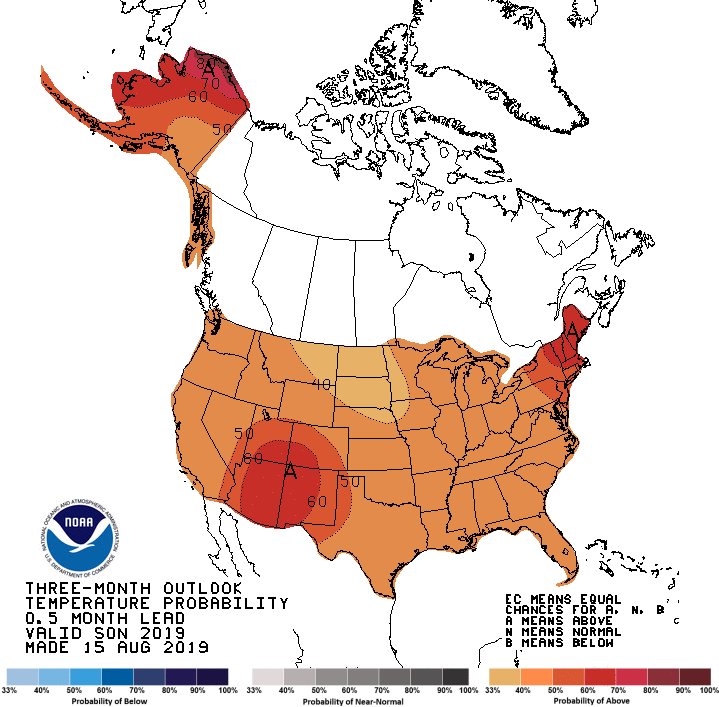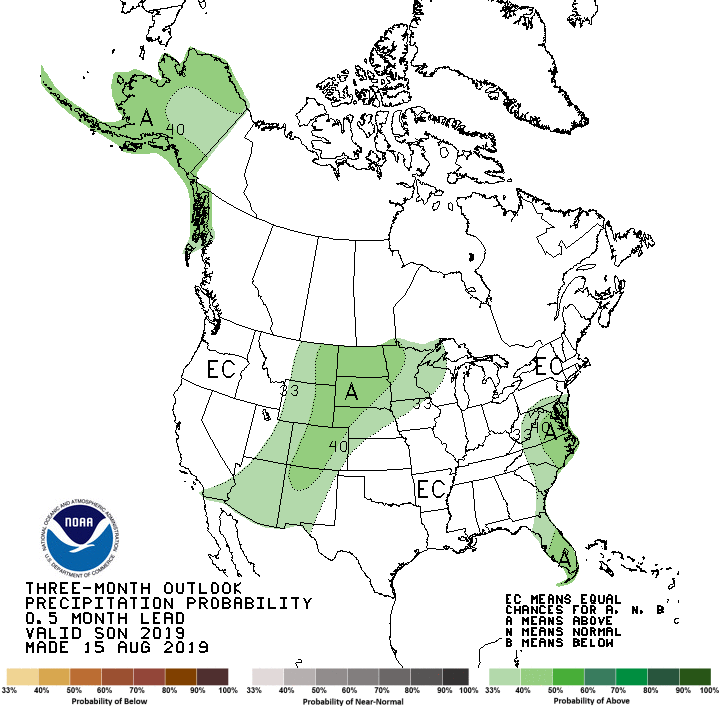Meteorological fall begins today and current indications are above average temperatures and rain is most likely across the southeast United States.
Meteorological fall should not be confused with astronomical fall. Meteorological fall starts on September 1st and ends of November 30th. Astronomical fall occurs when the sun crosses the celestial equator heading southward. This year, astronomical fall begins on September 23rd and ends on December 21st. December 21st is the winter solstice, which is also the shortest day of the year in the northern hemisphere.

The National Weather Center has a 40% chance of above average temperatures across much of the United States, including the Carolinas.

The good news is the National Weather Service is also predicting above average chance for rainfall across eastern and central portions of NC and SC. This is very good news for many locations in eastern NC and SC because many areas have seen below average rainfall this year. As for the mountains and foothills, these areas have an equal chance of above or below average precipitation.
During the fall, many areas loose approximately 3 hours of daylight. On September 1st, Charlotte has 12 hours and 55 minutes of daylight. By November 30th, Charlotte will have 9 hours and 59 minutes of daylight. (Source: Timeanddate.com)
